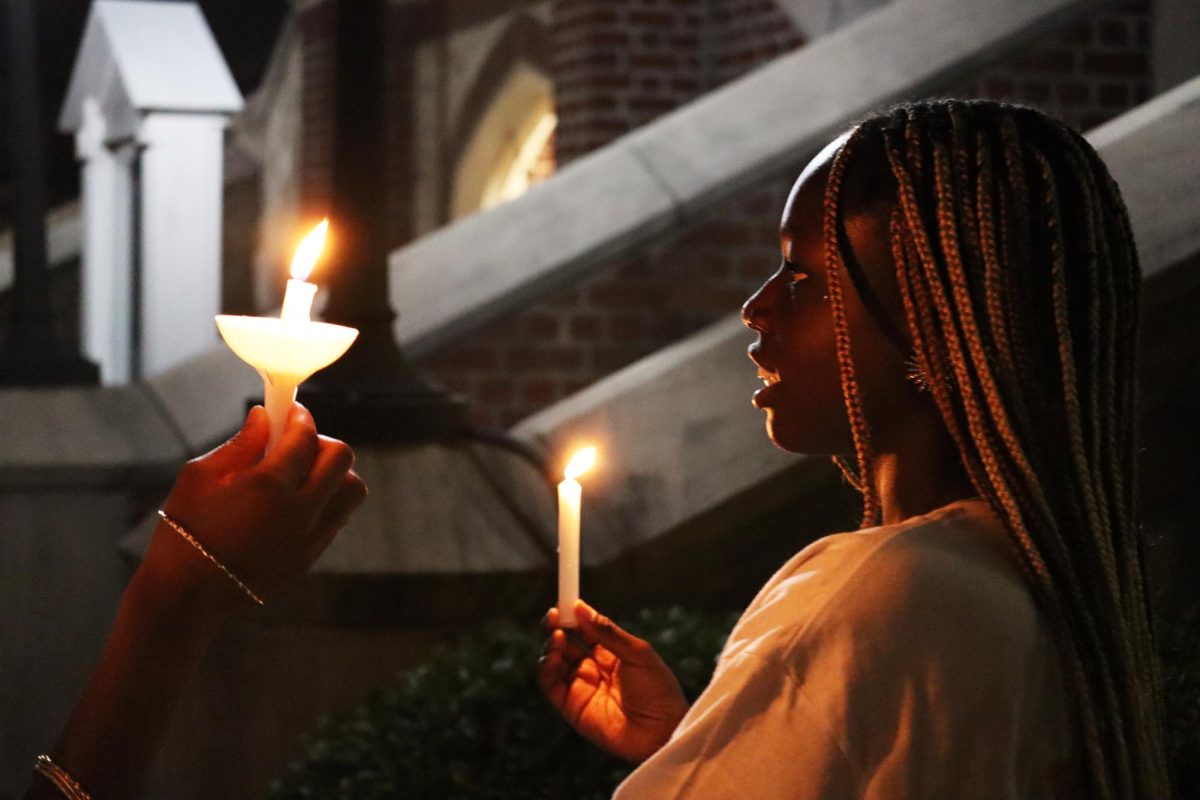As campuses nationwide brace themselves for the pursuit of a BCS national title, pigskin enthusiasts along St. Charles Avenue are left to ponder legends of the fall of years past – in the days of leather helmets, brown pants and maroon sweaters with gold stripes.
No days were more fabled than those of the 1926 Loyola football team coached by Eddie Reed, when the Wolfpack posted a perfect 10-0 record and amassed more points than any other team in the country.
The ’26 season started off with promise, as the ‘Pack sped off to four early wins against Philadelphia’s Thomas Jefferson University (39-0), Baylor University (13-10), Tennessee Medics (14-6) and Detroit University (38-0).Three sophomores, who had led the Loyola freshman football team to a state championship the previous year, played integral parts in orchestrating the wins: quarterback William “Bucky” Moore, lineman Raymond Drouhilet and running back Donald Maitland.
Moore, in the Oct. 22 issue of The Maroon that year, had “already been put forth as an All-American candidate.” By Nov. 19 he had scrambled for 1131 yards – shattering the single-season yardage record established by Illinois’ Harold “Red” Grange.
Drouhilet, after his performance in the first four games, eyed All-Southern honors; and Maitland, aside from scoring gobs of touchdowns, drew laud to his running from writers who described his style as “line plunging.”
Of the first four opponents, Baylor proposed the biggest challenge. The upset electrified New Orleans, so much so that Mayor A.J. O’Keefe wired Reed this simple-worded telegram: “Congratulations on victory. Tell all the boys I am proud of them.”
At the conclusion of the season, O’Keefe awarded, on behalf of the city, a large silver football trophy to the ‘Pack for its “triumphant” season.
Loyola’s fifth game that year – against the Camp Benning Infantrymen – presented a chance to settle a score. In 1925, according to The Maroon, the ‘Pack played Camp Benning after “stellar performers” such as team captain Gene Walet and Louis “Red” Gremillion had been ruled ineligible.
Camp Benning dealt Loyola a 45-0 massacre.
But on Oct. 24, 1926 – a Sunday afternoon – Loyola repaid the Infantrymen in kind and blanked them mercilessly with a 46-0 score.
Moore ventilated the Benning defense, amassing four touchdowns on his own.
After a 6-0 win over Catholic University of Washington, the ‘Pack entered the weekend of Nov. 5 lauded as the second highest scoring side in the South.
They trailed the Vanderbilt Commodores in terms of scoring but led the Alabama Crimson Tide – the eventual ’26 national champion, that storied program’s second of twelve all-time championships.
Moore, nicknamed the “Dixie Flyer” in the Nov. 5 issue of The Maroon, was distinguished as the “South’s Best” by regional sports writers.
Fred Digby, sports editor of the now-defunct New Orleans Item, first saw Moore play against Detroit. Digby reacted: “We doubt if any back hereabouts in recent years was any better than Moore. He has brains and speed and courage, plus natural ability seldom found in a young chap of 20.”
He continued, “He is a cyclone all by himself – sweeping around the ends, crashing over the giants in the line, blowing them over … like a cyclone on the plains of Kansas.”
Everett Strupper, former star for Georgia Tech and regarded by football historians as one of the greatest college backs ever to trod a gridiron, said about Moore, “He is one of the finest backs I have ever seen. He has wonderful speed and as soon as he develops his ability to cut back, he will be practically unstoppable.
“Bucky is playing with a great young team. I have seen few teams with better (blocking) than they had last week (against Catholic), and for clean fighting spirit, there isn’t a better team anywhere. Within two years, Loyola’s team ought to be known wherever football is played.”
By Nov. 19, the ‘Pack had secured blowouts against the Little Rock Eagles and the Spring Hill Badgers – Loyola’s homecoming game that year.
Against Little Rock, Moore assumed kicking duties and drop kicked an extra-point – posing the classic triple threat of running, passing and special teams play.
After the Little Rock win, Loyola (252 points) had overtaken Vanderbilt’s scoring mark by 13 points to make them kings of the South.
Spring Hill, primed to stop Moore’s explosiveness, couldn’t cope with Maitland’s off-tackle running and Gremillion’s backfield threat, both of which Loyola turned to for the 425 yards of rushing that game. Gremillion had also scored a 72-yard touchdown off a pass from Moore.
According to the Nov. 19 Maroon, the publicity the Wolfpack had gained through its victories and the “reputation Loyola and New Orleans enjoyed regarding the hospitality extended to visiting athletes” had afforded Loyola invites to play distinguished Ivy League programs like Brown, “conquerors of Yale and Dartmouth,” for the ’27 season.
Next came the most lopsided win the ‘Pack recorded that year, a 76-0 shellacking of the Lincoln Memorial University Airedales.
Drouhilet, lineman extraordinaire, caught an 18-yard pass from Moore and then motorcycled 10 more yards for the score.
Gremillion, Moore and Maitland also scored three touchdowns in a five-minute span against Lincoln.
The season closed out before 10,000 fans at Loyola Stadium as the ‘Pack barreled the Loyola Chicago Ramblers 40-14.
Gremillion was the outstanding offensive player of the game, trucking the Chicago line time and again for considerable yardage and four touchdowns. Regardless, Loyola Chicago “gave the best exhibition of forward passing seen in the Wolf stadium,” The Maroon conceded.
The ‘Pack ended the year leading the country in scoring, amassing 355 points in 10 games.
They eclipsed national champion Alabama and traditional powerhouses such as Notre Dame. Loyola did, however, have two advantages: a 10-game schedule (the runner-up played nine games) and an all-home game schedule.
They dealt the worst defeats in program history to Detroit, Lincoln, and Loyola Chicago.
Later, The Maroon learned that stellar lineman like Bill Ritchey and team captain A.D. Smith played the season while ailing medically. Ritchey played the whole season with a “small fractured bone in each ankle and a ‘spur’ growing on each. … Bill certainly merited the nickname … ‘gamest guy in the world.'”
Smith had been warned not to play at all in ’26 because of serious sinus trouble. He “starred in everyone of the ten games,” The Maroon chronicled, and would go on to have surgery to repair his complications.
A player named John “Tex” Barnes broke his shoulder in 1925; with it still tender, he played nine games of the fabled ’26 season without mishap before cracking his shoulder blade.
In retrospect: “Even the most sanguine supporters hoped for more than an even break on a such a tough 10-game schedule and were counting more on holding the big teams to close scores than on beating them – especially in the decisive manner in which the Wolves (had) accomplished the trick,” related The Maroon.
Despite expectations for mediocrity, the high-powered ’26ers brought to New Orleans its “first undefeated, untied eleven,” boasted The Maroon.
Ramon Vargas can be reached at [email protected].







